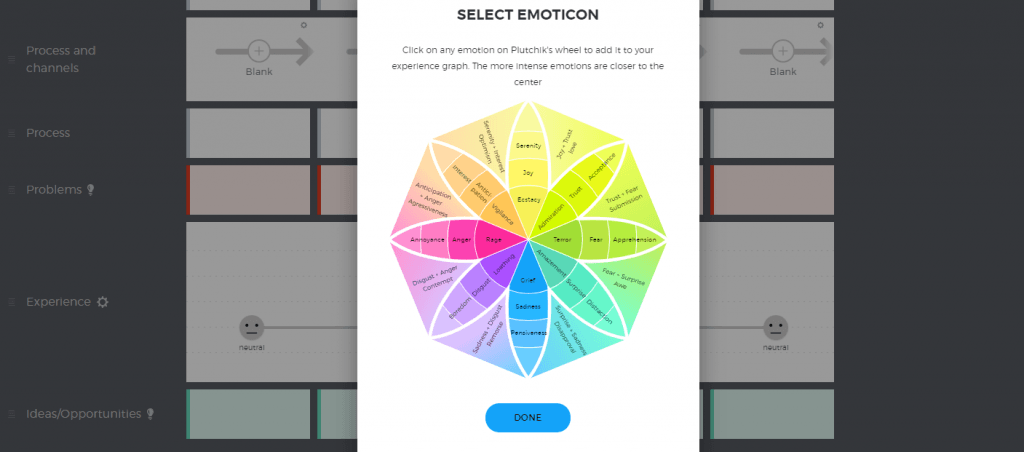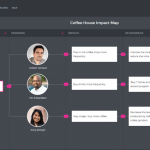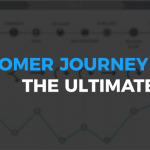As you may know, the experience section has always been a part of our CJM Online tool. Fun fact: this section is the most popular among UXPressia users - 98% percents of all maps created in UXPressia have this section in them.
This section comes in handy every time you want to capture emotional state of your customer at every stage of the journey. And it’s good to have it for a number of reasons:
- It gives you a high-level overview of the entire journey so you (or the ones you present the map) don’t have to read the details and see what’s going at a glance.
- Experience section helps convey the exact emotions to the audience.
- Last but not least, it just looks cool and spices up the overall look of your map.
And the refined experience section takes it all to a whole new level. Let me walk you through the changes:
1. Number one change on the list is a choice of color and a smoother graph. Before, it was plain blue, but now it can be any color. Which is good if you want the map to fit in your brand colors. Or simply if you want to use your favorite color. 😉 You can also add several experience sections, each with its own color, to address emotional journeys of different personas within the same map - how cool is that?
Oh, the number of experience lanes can now also be customized! Use 3 lanes to map it the-good-the-bad-and-the-ugly style, 5 lanes to keep it old-school, or 10 to go completely crazy! And anything in between. 😉
2. And if one color is not enough, then how about two? No? How about as many colors as there are stages on the map? Now we are talking. And you get this awesome gradient on top!
3. Up next - text descriptions for each emotion. There’s a set of 32 precooked descriptions! And surely you can type in anything you like.
4. And if you love emojis, we got some. And not just 5 like it used to be. There’s a whole lot more. When you click on a smiley you’ll see a pop up with 16 emojis but there’s a SEE ALL button...
5. Wait, is that emotion wheel? It is indeed!

Now, there’s a lot to it it gets overwhelming. Let’s look at it in more details.
Identifying emotions might be tricky so we picked the perfect tool to visualize them and find the best option for each particular case: emotion wheel by Dr. Robert Plutchik, an American psychologist.
How to use the wheel:
There are 8 primary emotions that serve as the foundation for all others: joy, sadness, acceptance, disgust, fear, anger, surprise and anticipation. These emotions are arranged by colors and located in the second circle.
For each of them an opposite (which can be found across from each other):
- Sadness is the opposite of joy
- Trust is the opposite of disgust
- Fear is the opposite of anger
- Surprise is the opposite of anticipation
Mixing primary emotions with similar ones produces new emotions, for example: love = (joy+ trust); guilt = (joy + fear); delight = (joy + surprise). These emotions are located in between.
Besides, the intensity of emotion grows as you move to the center of the circle. So varying emotions from very strong to not so much produces the diverse amount of emotions:
- Trust goes from acceptance to admiration
- Fear goes from timidity to terror
- Surprise goes from uncertainty to amazement
- Sadness goes from gloominess to grief
- Disgust goes from dislike to loathing
- Anger goes from annoyance to fury
- Anticipation goes from interest to vigilance
- Joy goes from serenity to ecstasy
Hope you’ll enjoy the new experience graph and it will come to rescue every time you're looking for a perfect word to describe your customers' emotions again! 😉









